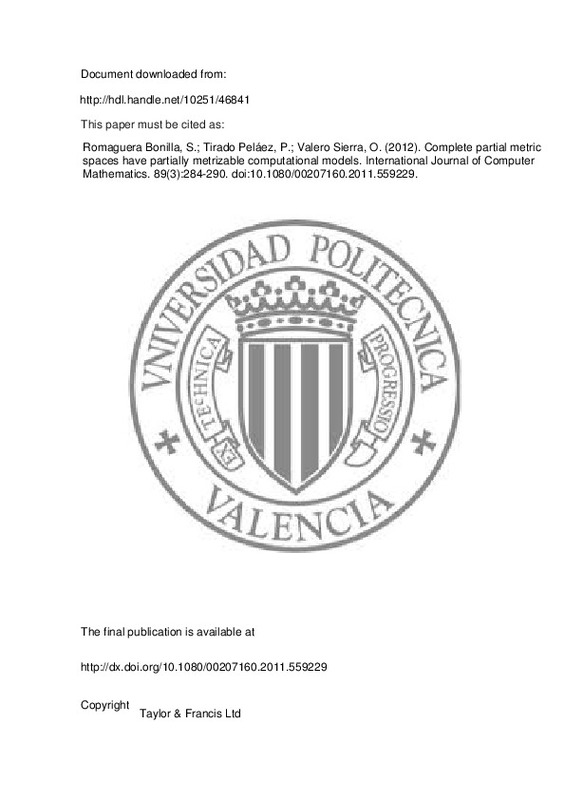ALI-AKBARI, M., HONARI, B., POURMAHDIAN, M., & REZAII, M. M. (2009). The space of formal balls and models of quasi-metric spaces. Mathematical Structures in Computer Science, 19(2), 337-355. doi:10.1017/s0960129509007439
Edalat, A., & Heckmann, R. (1998). A computational model for metric spaces. Theoretical Computer Science, 193(1-2), 53-73. doi:10.1016/s0304-3975(96)00243-5
Edalat, A., & Sünderhauf, P. (1999). Computable Banach spaces via domain theory. Theoretical Computer Science, 219(1-2), 169-184. doi:10.1016/s0304-3975(98)00288-6
[+]
ALI-AKBARI, M., HONARI, B., POURMAHDIAN, M., & REZAII, M. M. (2009). The space of formal balls and models of quasi-metric spaces. Mathematical Structures in Computer Science, 19(2), 337-355. doi:10.1017/s0960129509007439
Edalat, A., & Heckmann, R. (1998). A computational model for metric spaces. Theoretical Computer Science, 193(1-2), 53-73. doi:10.1016/s0304-3975(96)00243-5
Edalat, A., & Sünderhauf, P. (1999). Computable Banach spaces via domain theory. Theoretical Computer Science, 219(1-2), 169-184. doi:10.1016/s0304-3975(98)00288-6
Flagg, B., & Kopperman, R. (1997). Computational Models for Ultrametric Spaces. Electronic Notes in Theoretical Computer Science, 6, 151-159. doi:10.1016/s1571-0661(05)80164-1
Heckmann, R. (1999). Applied Categorical Structures, 7(1/2), 71-83. doi:10.1023/a:1008684018933
Kopperman, R., Künzi, H.-P. A., & Waszkiewicz, P. (2004). Bounded complete models of topological spaces. Topology and its Applications, 139(1-3), 285-297. doi:10.1016/j.topol.2003.12.001
Krötzsch, M. (2006). Generalized ultrametric spaces in quantitative domain theory. Theoretical Computer Science, 368(1-2), 30-49. doi:10.1016/j.tcs.2006.05.037
Künzi, H.-P. A. (2001). Nonsymmetric Distances and Their Associated Topologies: About the Origins of Basic Ideas in the Area of Asymmetric Topology. History of Topology, 853-968. doi:10.1007/978-94-017-0470-0_3
LAWSON, J. (1997). Spaces of maximal points. Mathematical Structures in Computer Science, 7(5), 543-555. doi:10.1017/s0960129597002363
Martin, K. (1998). Domain theoretic models of topological spaces. Electronic Notes in Theoretical Computer Science, 13, 173-181. doi:10.1016/s1571-0661(05)80221-x
Matthews, S. G.Partial metric topology. Procedings of the 8th Summer Conference on General Topology and Applications, Ann. New York Acad. Sci. 728 (1994), pp. 183–197
Rodríguez-López, J., Romaguera, S., & Valero, O. (2008). Denotational semantics for programming languages, balanced quasi-metrics and fixed points. International Journal of Computer Mathematics, 85(3-4), 623-630. doi:10.1080/00207160701210653
Romaguera, S., & Valero, O. (2009). A quasi-metric computational model from modular functions on monoids. International Journal of Computer Mathematics, 86(10-11), 1668-1677. doi:10.1080/00207160802691652
ROMAGUERA, S., & VALERO, O. (2009). A quantitative computational model for complete partial metric spaces via formal balls. Mathematical Structures in Computer Science, 19(3), 541-563. doi:10.1017/s0960129509007671
ROMAGUERA, S., & VALERO, O. (2010). Domain theoretic characterisations of quasi-metric completeness in terms of formal balls. Mathematical Structures in Computer Science, 20(3), 453-472. doi:10.1017/s0960129510000010
Rutten, J. J. M. M. (1998). Weighted colimits and formal balls in generalized metric spaces. Topology and its Applications, 89(1-2), 179-202. doi:10.1016/s0166-8641(97)00224-1
Schellekens, M. P. (2003). A characterization of partial metrizability: domains are quantifiable. Theoretical Computer Science, 305(1-3), 409-432. doi:10.1016/s0304-3975(02)00705-3
Smyth, M. B. (2006). The constructive maximal point space and partial metrizability. Annals of Pure and Applied Logic, 137(1-3), 360-379. doi:10.1016/j.apal.2005.05.032
Waszkiewicz, P. (2003). Applied Categorical Structures, 11(1), 41-67. doi:10.1023/a:1023012924892
WASZKIEWICZ, P. (2006). Partial metrisability of continuous posets. Mathematical Structures in Computer Science, 16(02), 359. doi:10.1017/s0960129506005196
[-]







![[Cerrado]](/themes/UPV/images/candado.png)


